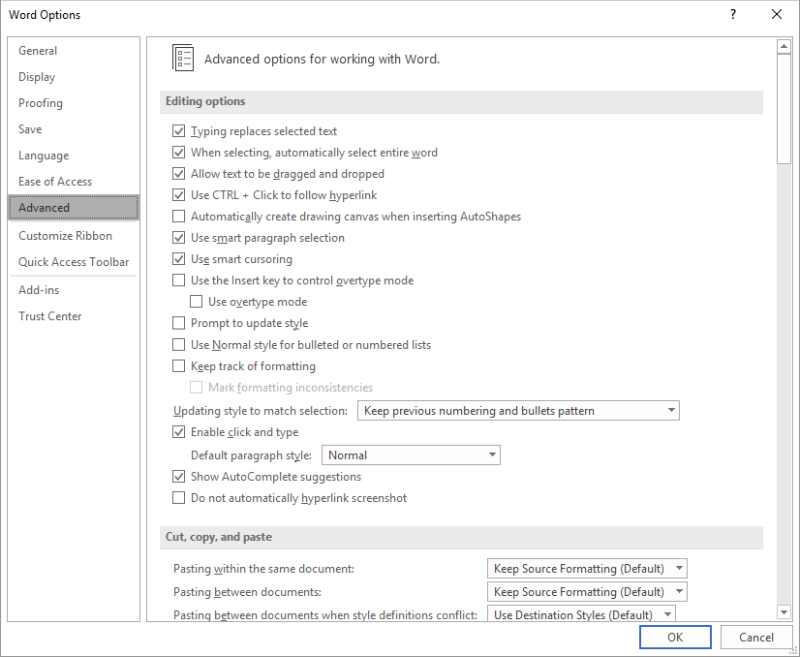Please Note: This article is written for users of the following Microsoft Word versions: 2007, 2010, 2013, 2016, 2019, and 2021. If you are using an earlier version (Word 2003 or earlier), this tip may not work for you. For a version of this tip written specifically for earlier versions of Word, click here: Differences in Behavior of Links.
Written by Allen Wyatt (last updated June 2, 2025)
This tip applies to Word 2007, 2010, 2013, 2016, 2019, and 2021
Fay has two documents linked to each other—a form linked to an information document. On her work PC when she hovers the mouse pointer over the link it shows as a "pointer hand." On her PC at home she doesn't get the hand but can right-click and select to open the link. Fay is wondering why the behavior is different on the two systems and what she can do to fix her home PC.
The behavior difference that Fay notes is actually controlled by a configuration setting within Word. Follow these steps to find the setting:

Figure 1. The Editing options for Word.
Pay attention to the setting named Use CTRL+Click to Follow Hyperlink. If this check box is selected, then Word requires the use of the Ctrl key to activate the link. (Or, as Fay did, right-clicking the link and selecting to open it.) If the check box is unselected, then you'll get the "pointer hand" and be able to simply click on a link to follow it.
WordTips is your source for cost-effective Microsoft Word training. (Microsoft Word is the most popular word processing software in the world.) This tip (13092) applies to Microsoft Word 2007, 2010, 2013, 2016, 2019, and 2021. You can find a version of this tip for the older menu interface of Word here: Differences in Behavior of Links.

Learning Made Easy! Quickly teach yourself how to format, publish, and share your content using Word 2021 or Microsoft 365. With Step by Step, you set the pace, building and practicing the skills you need, just when you need them! Check out Microsoft Word Step by Step today!
Karen is having problems getting hyperlinks to print in a document on her home computer. There are only a limited number ...
Discover MoreWord allows you to link one document to another document rather easily. If you later want to grab the contents of a ...
Discover MoreWord allows you to add hyperlinks to your document. If your document includes quite a few hyperlinks, you may want a way ...
Discover MoreFREE SERVICE: Get tips like this every week in WordTips, a free productivity newsletter. Enter your address and click "Subscribe."
There are currently no comments for this tip. (Be the first to leave your comment—just use the simple form above!)
Got a version of Word that uses the ribbon interface (Word 2007 or later)? This site is for you! If you use an earlier version of Word, visit our WordTips site focusing on the menu interface.
Visit the WordTips channel on YouTube
FREE SERVICE: Get tips like this every week in WordTips, a free productivity newsletter. Enter your address and click "Subscribe."
Copyright © 2026 Sharon Parq Associates, Inc.
Comments